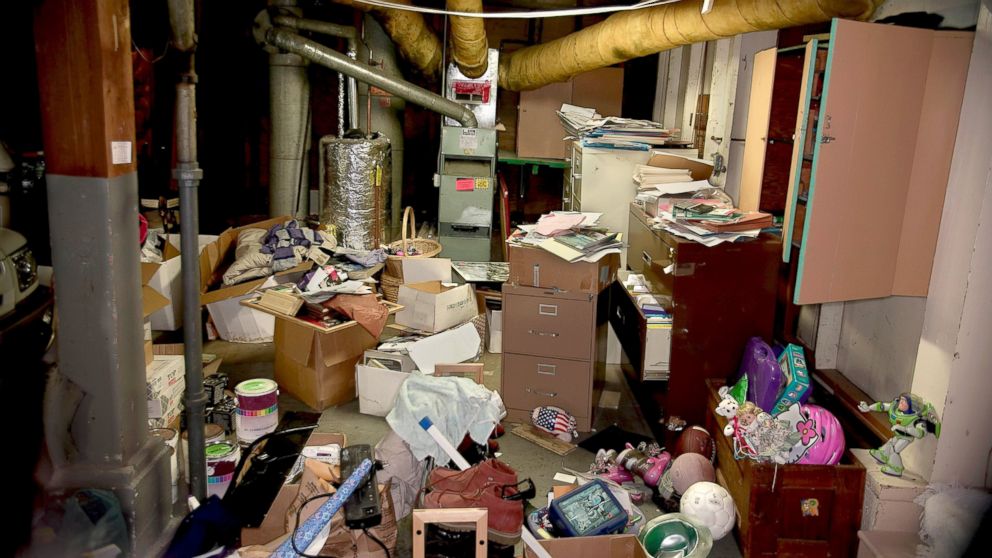5 Ways to Save Money on Self-Storage
No matter why you're shopping for self-storage, you deserve the best deal.

Feb. 1, 2014 — -- intro: People need an extra place to keep their possessions from time to time. College kids might require rental space for their belongings over the summer and folks moving from one city to another may opt for temporary storage while looking for a new home. A storage unit might serve as an additional closet or act as a container for plumber's tools, excess office furniture or inventory from a failed business.You might just have too much stuff and no place to put it.
No matter why you're shopping for self-storage, you deserve the best deal. Here are some ways to make this venture more economical.
quicklist:title: Declutter your home firsttext: We tend to keep too many belongings, says Chris Seman, president of Caring Transitions, a national company based in Cincinnati that helps families downsize and walks them through difficult transitions.
Before shuffling your excess goods off to a self-storage unit, make sure you have a future use for them.
A good litmus test is to walk through each room of your home with a notepad and pen, writing down what you work with every day and must have, Seman says.
Read More From Bankrate: Insurance for your stuff placed in storage
If you discover an item you've moved more than once and it still remains in the same box, it has to go. To get rid of these household goods, hold a yard sale or donate them to charity. The money you make from a sale can help finance your current move.
quicklist:title:Choose an appropriate unittext:
Self-storage comes in an array of types:
• Indoor: An indoor self-storage unit is protected from outside elements with an interior entrance.
• Outdoor: An outdoor self-storage area offers convenient drive-up access.
• Standard: The standard storage unit is not heated, much like a garage.
• Heated: A heated self-storage safeguards valuables from cold weather.
• Climate-controlled: A climate-controlled unit maintains a set temperature range keeping treasures safe from extreme heat and severe cold.
Read More From Bankrate: Storing financial files digitally
"Quilts, photos, art, quality furniture and moisture-sensitive items need a climate-controlled unit," says Tron Jordheim, chief marketing officer of StorageMart in Columbia, Mo. "Heat and cold can be rough on fabric or delicate items like photos."Even though you only plan to rent space for a month or two, that time almost always lasts longer than you think. So you need the best unit for your belongings.
quicklist:title: Maximize storage unit sizetext:
Jordheim says StorageMart estimates that the contents of a one-bedroom apartment will fit into a unit that measures 50 square feet. Storage companies often have a size estimator on their website to make it easier to determine your needs.
If you can't find what you want online, visit the location you have in mind and look at the space that's available. Imagine using shelving units, which you may be able to rent or bring on your own to create more room. If you pack high and tight, putting furniture on the end and stacking high-quality boxes in tall columns, you can take advantage of a smaller repository.
Place what you won't need anytime soon in marked boxes in the back and what you'll be swapping out in the front.
quicklist:title: Negotiate a better rental feetext:
If the room you're offered isn't ideal -- wrong size, or it's on the second or third floor -- inquire about a break on the fee."When you ask for a lower price, give some logical justification for your request," says Jeff Yeager, aka The Ultimate Cheapskate and author of "The Cheapskate Next Door."
Yeager also suggests asking if you can move in immediately and not wait until the first of the month. A landlord or company would find that appealing because you'll pay now, not later. You can also offer to cover the first three months all at once to get a discount. Cash should be a good incentive, because then the merchant won't incur credit card fees.
Read More From Bankrate: What not to store in your safe-deposit box
"If all else fails, mention that times have been difficult and ask if the manager can do better on the price," Yeager says.
quicklist:title: Consider insurance for your belongingstext:
When you purchase a homeowners policy, most companies provide coverage from 50 percent to 70 percent of the total amount of your policy for your belongings.
If you have a policy for $100,000 to cover the structure of your home, then your personal belongings are covered for $50,000 to $70,000. This part of the policy also includes items you have stored away from your home, including in storage units, says Karl Newman, president of the NW Insurance Council, a nonprofit organization in Seattle that educations the public about insurance matters.Some insurance companies limit the amount of coverage on belongings stored outside your home to 10 percent of the amount of insurance you have on your possessions. In the example above, the coverage amount for items in a storage unit would be $5,000 to $7,000, Newman says.
"Rely on your homeowners insurance for that dollar amount," he says. "Your deductible applies to losses in your storage unit, too."Remember your stored goods are only covered for what a standard homeowners policy includes -- losses caused by fire, theft, wind, etc. If you need coverage for floods, earthquakes or landslides, you will need to buy special coverage.
"If you have high-value items in a unit like gold, silver, watches, furs or fine art, you'll need special, additional coverage for those," Newman says.
Read this story on Bankrate.com.
This work is the opinion of the columnist and in no way reflects the opinion of ABC News.




